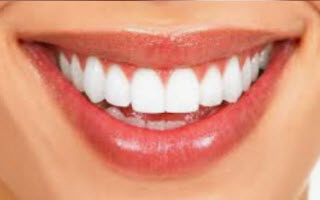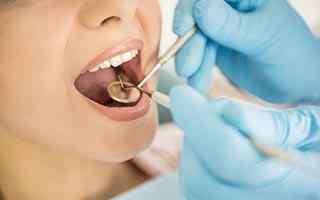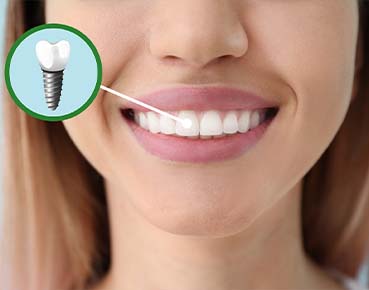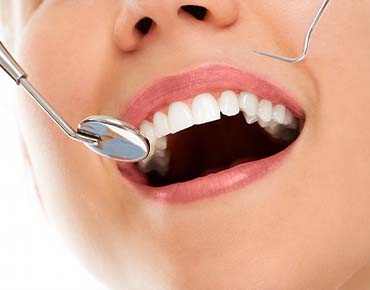Dental Bridge In Santa Monica
Dr. Ali Mogharei is a renowned expert in dental bridges in Santa Monica, Culver City, Venice, and Brentwood. He uses advanced techniques to create custom-made bridges that restore missing teeth, ensuring a natural-looking and functional smile. With Dr. Mogharei's expertise, patients can enjoy a restored bite, improved oral function, and a renewed confidence in their appearance.
What is a Dental Bridge?
If you’re embarrassed by your gappy smile, a dental bridge could be the ideal solution.
A dental bridge is a structure that quite literally “bridges” the gap caused by one or missing teeth. A bridge consists of a false tooth (known as a “pontic”) secured firmly in place by the teeth adjacent to the gap. The pontic itself can be made from a variety of different materials, from gold to porcelain to alloys (or even a combination of materials). While budget and personal preference will dictate the final choice of material, people looking for a natural-looking result will usually choose a porcelain pontic.
What Types of Dental Bridges are Available?
Depending on your specific needs, your dentist may recommend one of four different styles of a dental bridge.

1. Traditional Dental Bridge
The traditional dental bridge has been around the longest and remains the most commonly used type of bridge. A traditional bridge involves one or more pontics secured in place by dental crowns (known as “abutments”). A traditional dental bridge is very strong and is tough enough to replace missing molars, which are typically the teeth that do the most work.
The main drawback of traditional bridges is that the teeth adjacent to the pontic will need to be crowned. To support a dental crown, the natural tooth must be prepared beforehand. This process involves filing down the tooth’s enamel to make room for the crown. The process is irreversible, so even if you decide to change to a different type of bridge in the future, or maybe even replace the bridge with implants, you will still need to protect the prepared tooth with a crown. This may be fine if the tooth has already suffered some decay, but can be less than ideal if it’s otherwise healthy.
2. Cantilever Bridge
Whereas a Traditional Bridge is supported by the teeth on both sides of the missing tooth, a Cantilever bridge is supported on one side only. This makes it a good option for people who have only one natural tooth next to the missing tooth.
Like the Traditional bridge, the Cantilever bridge requires the enamel on the natural tooth be “filed” down to support a crown. The enamel removal is irreversible, and the prepared tooth will always need to wear a crown.
Because a Cantilever bridge is supported on one side only, the bridge can sometimes act as a lever, risking the health of adjacent teeth. As this can result in loosened crowns or cracked and broken teeth, Cantilever bridges are rarely used in modern dentistry.

3. Maryland Bridge
Both Traditional and Cantilever bridges require one or more teeth to be crowned. For patients with healthy teeth that wouldn’t otherwise need a crown, this can be a real drawback. The Maryland bridge provides a solution to the problem. The Maryland bridge consists of a pontic held in place by a metal or porcelain framework that is fused to the back of the adjacent teeth. As this style of the bridge doesn’t require the use of crowns, it can be a highly attractive solution to patients who want to preserve the integrity of their natural teeth.
On the downside, Maryland bridges are not as strong as their counterparts and are not recommended for use at the back of the mouth where teeth are subject to biting force. Some patients also find the framework uncomfortable; if the resin holding the framework is not sufficiently strong, the framework can slip and cause discomfort and irritation to the gums.
4. Implant-Supported Bridge
Implant-supported bridges are the newest type of bridges available and are a great option for people looking to replace missing teeth. Rather than being supported by crowns or frameworks, this kind of bridge is supported by dental implants. Typically, every missing tooth is replaced with an implant, and the implants are then used to secure the bridge. A more cost-effective approach in the case of multiple missing teeth will involve a pontic held in place between two implant-supported crowns.
The main advantage of the implant-supported bridge is that it’s very comfortable and secure. Patients may not even remember they have a bridge in place, as the implants will feel just like their natural teeth.
What are the Benefits of a Dental Bridge?
Dental bridges offer an effective, comfortable and aesthetic solution to the problem of missing teeth. Let’s take a look at the top 5 advantages of getting a dental bridge.
1) Improved Appearance
One of the side effects of missing teeth is a loss of bone and gum tissue integrity, which can lead to a shrunken and gaunt facial appearance. A dental bridge will support the proper positioning of the soft tissue inside the mouth, helping to restore a natural, youthful appearance.
2) Restored Chewing Ability
A dental bridge is a great alternative to traditional dentures, which can slip and cause problems when you chew. Unlike traditional dentures, bridges are very stable and will help restore the natural chewing function. With a dental bridge, you can go back to enjoying the foods you love without having to worry.
3) Increased Comfort and Confidence
Over time, missing teeth can cause bone loss in the jaw. This can impact how well traditional dentures fit and can result in them becoming loose and uncomfortable. Dental bridges, on the other hand, offer a stable, secure fit, promising better comfort and function. As an added advantage, you don’t have to worry about your bridge popping out when you speak or smile, as can sometimes happen with dentures.
4) Improved Speech
Traditional dentures have a habit of becoming loose over time. As they slip around in the mouth, the facial muscles will tense to keep them from popping out. The tension can cause changes in your natural voice, leading to mumbling and slurring. As dental bridges offer a much more stable alternative to dentures, this problem is completely avoided, and you can go back to speaking with confidence.
5) Retaining Alignment
When you lose a tooth, your natural alignment (i.e. the way your upper and lower teeth fit together) can be compromised. This can cause the remaining teeth to start moving out of place, as they try and “fill” the gap caused by the missing tooth. Not only can this result in loosened, misaligned teeth, it can also trigger more serious jaw disorders like TMJ. A bridge will stop the movement of teeth and preserve alignment, avoiding these complications and allowing you to retain a functional bite.
How is a Bridge fitted?
Getting a bridge fitted will involve a number of different steps. Let’s take a look at the standard process for fitting a bridge.
First Visit
During your first visit, your dentist will prepare the abutment teeth. These are the teeth that will support the pontic. The preparation process will involve removing a layer of enamel from the teeth to make room for a dental crown. Once the teeth have been prepared, your dentist will take an impression of the filed teeth. This impression will be sent to the dental lab, and will act as the model from which the bridge, crowns and pontic are made. To protect the prepared teeth while the permanent bridge is being made, your dentist will fit a temporary bridge.
Second Visit
During the second visit, your dentist will remove the temporary bridge and fit the permanent bridge in its place. Your dentist will check the fit of the bridge, and make any necessary adjustments to ensure the best and most comfortable fit. After the final checks have been made, and you are completely satisfied with the fit, the bridge will be cemented in place.
Follow- up Appointments
Sometimes, follow up visits may be required to check the fitting and bite of your new bridge. If your dentist thinks further visits are necessary, they may temporarily cement the bridge in place for a few weeks. The bridge will be permanently cemented only once you and your dentist are both fully content with the fit.
FAQ
How long will a bridge last?
The lifespan of a bridge varies between five and fifteen years. As long as you maintain good oral hygiene, and attend regular dental checkups, you can expect your bridge to last for at least 10 years, if not longer.
Are bridges reliable?
Dental bridges have been in use for many years, and are proven to offer a safe, reliable, and effective alternative to traditional dentures. One known problem with bridges is that they are dependent on the health of the teeth that support them. If one of the supporting teeth fails, it can compromise the entire bridge. However, by sticking to a tooth-friendly, low- sugar diet, and maintaining a good oral hygiene routine, you can minimize the risk of this happening and enjoy the benefits of a bridge for many years to come.
How do I care for a bridge?
Once your bridge is fitted, it’s important to maintain a good oral hygiene routine, including brushing, flossing, and attending regular dental check-ups. This will keep your remaining teeth in the best condition possible, and in turn, ensure a solid foundation for your bridge. If you have any concerns about how to properly care for your teeth, your dental hygienist will be able to offer advice and even demonstrate the best brushing and flossing technique.
Will a dental bridge affect how I eat?
A dental bridge will actually improve your ability to eat all kinds of foods. If you wear dentures, you’re probably used to avoiding certain foods out of concern about how well your dentures will cope. As dental bridges are more stable and secure than dentures, you’ll be happy to find you can go back to enjoying all your old favorites. Steak, apples, bread – nothing is off the menu when you have a dental bridge! That said, it can sometimes take a couple of weeks to get used to the bridge, so until then, you may find it best to stick to softer foods.
How much will a dental bridge cost?
The cost of a dental bridge can vary widely, and the final price will depend both on the style of the bridge you chose, and the type of materials used in its construction. Given the variety of materials available to make the bridge, be sure to let your dentist know your budget so they can advise on the best options available in your price range.
How do I know if a bridge is suitable for me?
Before you have any dental work carried out, your dentist will offer a consultation to make sure a bridge is the best solution for your specific dental needs. During the consultation, your dentist will assess the quality of your teeth and gums. If necessary, they may take x-rays to check your remaining teeth are healthy enough to support a bridge. They will then work closely with you to find the best, most suitable solution to your requirements.
Dr.Mogharei
By choosing Dr. Dr.Mogharei for your dental bridge procedure, you’ll be putting yourself (and your teeth!), in the hand of an expert. Over the years, Dr.Dr.Mogharei has helped thousands of satisfied patients restore their smiles with the help of dental bridges. By combining the most up-to-date technology, materials, and equipment with a truly patient-centric approach to dentistry, Dr. Dr.Mogharei ensures the most effective, patient-friendly treatment possible. Join our ranks of happy patients by booking your consultation with Dr.Dr.Mogharei today.






Book an Appointment with Our Team Today!
Enhance Your Dental Health
Our Services
We offer the full scope of family, cosmetic, general dentistry and reconstructive procedures.
What People Say

(310) 829-2224
Discover Expert Dental Care Tips in Our Blogs
Santa Monica Tooth Doctor – Dr. Mogharei Blog



















